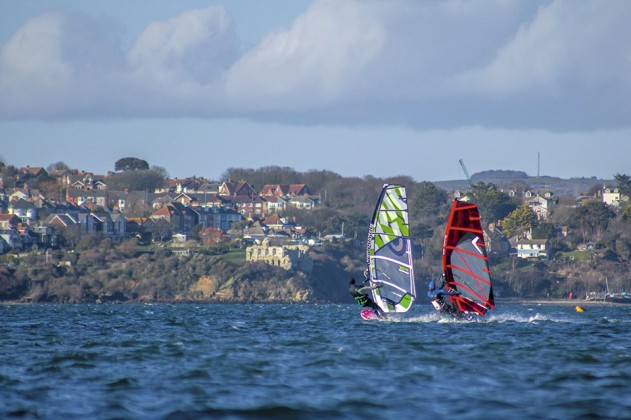TIMES OF CHANGE – 105L WIDE FREERIDE BOARD TEST 2015
Test Editor Tris Best // Second Tester Maurin Rottenwalter
Photos Nick George // Test Location OTC, PORTLAND
When the freeride phenomenon exploded onto the windsurfing scene back in the late nineties and took a firm grip of the consumer market, boards between 100-105L were quite often the jewel within a brand’s range. They offered good rig carrying capacity and early planing, but more importantly an ease and range of use across the wind strengths that most would comfortably venture out in. After all, the stand out boards before then (Mistral Screamer and F2 Sunset Slalom for example) were around the same size, normally quoting volumes just over the 100 litre marker.
This test was originally published in the May 2015 issue.
Step forward a few years and a different trend began to emerge that threatened to eclipse the small freeride board. Riding off the success of their smaller siblings, the Freestyle-Wave or Crossover board ranges of most brands began to balloon, encroaching on (and in some casews pushing well beyond) the 100L threshold. They began to steal the limelight, offering enough performance and versatility to entice even the most ardent high-wind rider to expand their board quiver. Add into the melting pot the splinter-group freeride discipline of ‘freerace’ (offering applicable near slalom-like straight-line potential), and the poor ‘bog-standard’ small freeride option was looking like a bit of a lost soul. The default was for it to adopt an easy, forgiving and dependable role, which all too often translated into a safe user-friendly board for the progressing intermediate … but a dull uninspiring ride for the more experienced. The board class was becoming obsolete; a dinosaur of a past era.
So step forward again into 2015 and we can honestly say that testing this group of boards has been one of the more enlightening tests we’ve ever done. The small freeride contender is back … and it means business!
FINDINGS
“What has changed?” I hear you ask. Well, the simple answer rests with the now established ‘thin’ concept – making wide boards significantly thinner in depth, thereby thinning their rails and allowing more effective use of volume. It has taken a few years and several incarnations for the idea to really crystallize; some of these boards are already a brand’s second generation of the concept. But the results have seriously transformed this class of board, from being a compromised stepping-stone for the progressing intermediate, to one of the most incredibly diverse and appealing options available, capable of catering for nervous intermediates to the most demanding expert sailor. As with any ‘technical’ sport, windsurfing has seen its fair share of fads over the years, but thin and wide is a fantastic iteration in board design development that is undoubtedly here to stay. Embrace it and you won’t be disappointed.
SUMMARY
Reading through the test reports verdicts, you would be forgiven for coming to the quick conclusion that we loved all these boards. But the truth is that there are some simply stunning boards here, which most people reading this would get on fantastically well with. Having had some in the OTC centre since they were first released last autumn, we have had a chance to fully appreciate their massive range of appeal.
So much so that I know I’m going to be fighting one of our regular intermediate clients for use of one of these boards when we get the conditions for a planned downwinder out of the harbour. She loves the board so much we have actually nicknamed it after her! But change the straps, load it with a powerful sail and it has a killer mix of ability and ease that will make it a pleasure to use in challenging conditions. In fact, I’m actually more worried about wrestling the board off Lily than I am about doing battle with the conditions!
There is also a good deal of diversity amongst the boards on test here. The Atom IQ is unchanged for 2015 and remains an electrically fast and exciting board to use. It is also the JP’s second year, offering early planing and a lively engaging ride, skimming and skipping over the water rather than pushing through it. The Gecko meanwhile comes from the other end of the spectrum, with its pronounced vee parting the water like Moses and calming the wildest seas.
We then move onto the new Firemove 102 from RRD, which has an ease and tuneable practicality to make the most of any environment, even a small wave break. Last but by no means least, we have the two boards that have taken the ‘wide-thin’ concept to new heights – the Tabou Rocket-Wide and Simmer Freemove. They both offer a fun engaging ride, yet combine it with unwavering stability and poise that seems to defy logic.
THE OTC
This test was conducted at the Official Test Centre (OTC) at Portland, Dorset. The OTC centre is based within the grounds of the National Sailing Academy that hosted the Olympic sailing classes in 2012. With the best wind stats on the south coast, mirror flat water in prevailing winds and a safe launch area with excellent facilities, it provides the ideal test venue. Much of the kit is still on site, so why not go and try some of it for yourself?
THE LINE-UP


